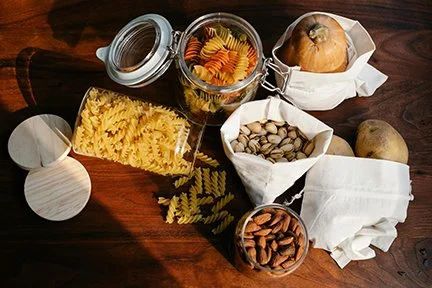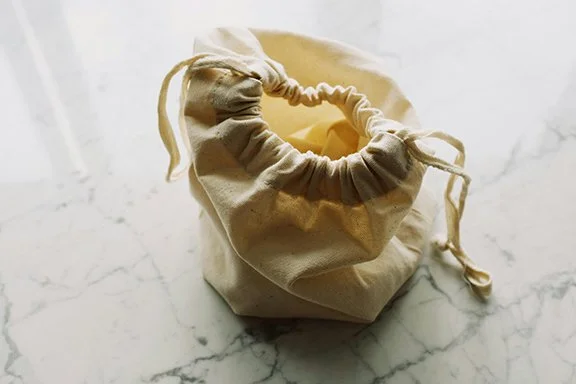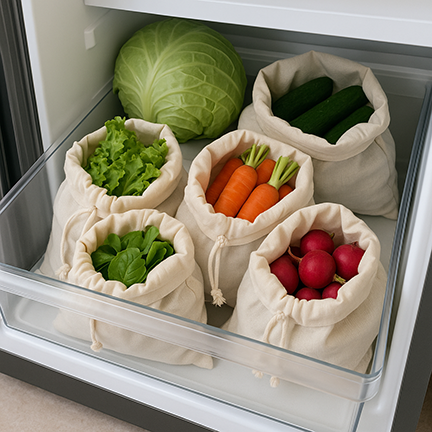How I Keep My Produce Fresh (Even Without a Root Cellar)
I love the feeling of bringing in a basket of fresh-picked vegetables from the garden—or grabbing a few bunches of organic produce at the market when I don’t have a garden going. Whether it’s just-washed lettuce or a bundle of carrots still speckled with earth, that freshness is something I want to hold onto.
Photo by Hanamara on Pexels
And sure, I love canning, freezing, and dehydrating as much as the next homesteader. I’ve got shelves lined with glass jars and a freezer full of chopped peppers, berries, and even bone broth cubes. But I’m not always thinking long-term. Sometimes, I just want my produce to stay crisp and lovely for the week ahead.
That’s why I’ve become a bit of a storage nerd when it comes to keeping things fresh. I’m sharing my favorite methods below—plus a printable chart you can stick on the fridge and a step-by-step guide for making your own reusable produce bags.
Why Fresh Storage Matters (Even if You Preserve)
Even the most seasoned canner doesn’t want to eat mushy cucumbers or limp zucchini all week. Knowing how to store fresh food well means:
Less waste (no slimy lettuce guilt trips)
Better nutrition (fresh-picked or -purchased = highest value)
Easier meal prep (things are ready when you are)
If you’re buying organic produce, especially from a store like Natural Grocers or a farmer’s market, it’s an investment worth protecting. No one wants to throw away $7 worth of berries two days after buying them.
Storage Options: Pros and Cons
Over time, I’ve tested just about every method for storing vegetables. Here’s what I’ve learned:
Plastic Bags or Clamshells (Store Packaging)
Just don’t. These trap moisture, accelerate spoilage, and add microplastics to your home. Even those "vented" clamshells often do more harm than good once you get them home. They’re convenient, yes—but at a cost.
Glass Containers
Perfect for chopped or delicate produce like berries and herbs. They:
Prevent odors
Are non-toxic and washable
Keep contents visible (so things don’t rot forgotten)
But they’re heavy and take up fridge space fast.
Muslin or Cotton Bags
These are my favorite for leafy greens, carrots, and anything that needs to breathe. They:
Allow for air circulation
Absorb excess moisture
Prevent sweating and mold
You can even lightly dampen them for herbs or greens. They’re washable, natural, and easy to sew!
Paper Towels or Cloth Wraps
Good for wrapping individual veggies or lining storage bins. Keeps moisture levels balanced but can waste paper unless you switch to reusable cloths.
Perforated Bins or Crisper Drawers
Designed for airflow, especially when not overcrowded. Adding a small cloth bag or lining can help catch condensation.
Refrigerator vs. Countertop vs. Cool Cabinet
Image by Shevtsa on Pexels
Fridge: Most produce lasts longer here, but not everything belongs (cucumbers, tomatoes, garlic, potatoes—these do better elsewhere).
Countertop: Great for items still ripening (avocados, peaches, bananas). Just don’t mix ethylene producers with sensitive produce!
Cool Cabinet or Root Cellar Space: Ideal for hardy items like cabbage, carrots, and potatoes—if you’ve got a spot that stays dark and 50–55°F, use it!
How I Store My Produce (The Quick Guide)
I’ve put together a full printable Fresh Produce Storage Chart that you can stick on your fridge or inside a cabinet door. It tells you:
Which produce belongs in the fridge, countertop, or cool cabinet
How long it typically lasts
Special storage notes (like wrapping herbs in damp paper towels or keeping potatoes away from onions)
Want the full guide?
👉 Download the free chart below!
Making My Own Produce Storage Bags
One of the things that’s made a huge difference for me is switching from plastic to breathable cloth bags. I sew mine out of unbleached cotton muslin—they’re easy to make, washable, and help keep vegetables from sweating or drying out too quickly.
Why Muslin?
It’s breathable (unlike plastic)
It absorbs excess moisture without making things soggy
It’s inexpensive and natural
What Weight Muslin?
I recommend using medium-weight muslin, between 5 and 6 oz per square yard. Anything lighter can feel flimsy, and heavier fabrics don’t allow enough airflow.
How to Make a Muslin Produce Bag (Any Size)
You’ll need:
Cotton muslin (pre-washed)
Coordinating thread
¼" twill tape or cotton cord for the drawstring
To Measure:
Decide what you want the bag to hold (carrots, lettuce, zucchini, etc.)
Add 2" to both height and width for seam allowance and drawstring channel
Cut two rectangles of that size
Simple Steps:
Place right sides together, sew around sides and bottom.
Fold the top edge down ½", then again ½" to create the channel.
Stitch the channel in place, leaving a 1" opening.
Thread in the drawstring, knot ends, and you’re done!
Want ready-to-go templates for small, medium, and large sizes?
👉 Download the free bag template below!
Fresh vs. Preserved: It’s Not Either/Or
Just because we homestead—or dream about it—doesn’t mean every tomato gets jarred. Some get sliced on sourdough with home made mayonnaise and salt. Some zucchini become quick stir-fries. Even those store-bought organic carrots deserve the chance to shine all week long.
That’s the joy of living close to the land: knowing what’s worth preserving, and what’s worth enjoying right now—with freshness intact.
Image by Karolina Grabowski









